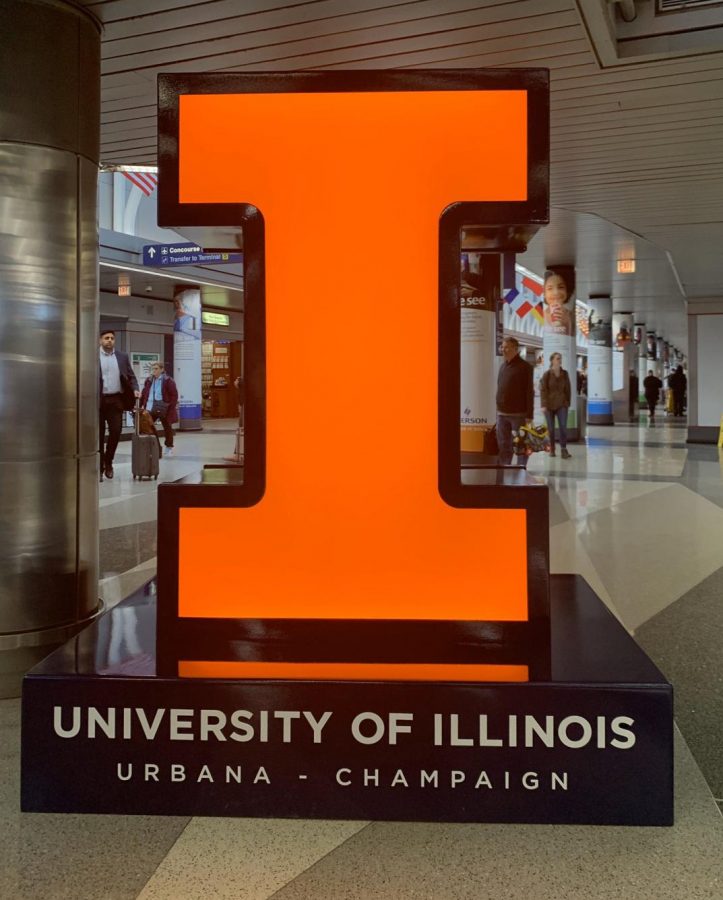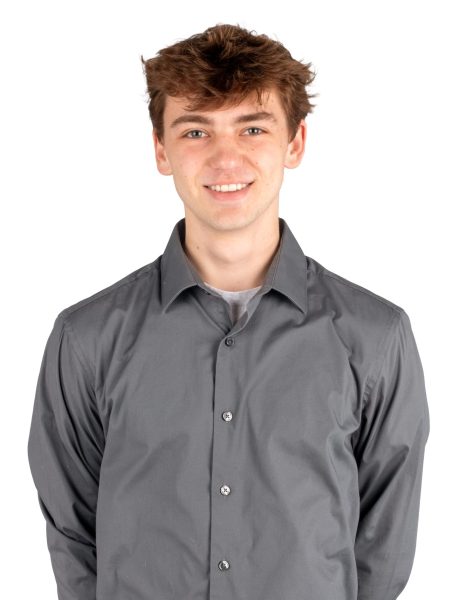The University’s Office of Undergraduate Admissions published its annual first-year enrollment report on Monday.
The report, which is compiled each fall semester on the 10th day of classes, includes data representing trends such as the selectivity of the previous application cycle, yield rates, diversity of the first-year class and tuition contribution by college and residency.
Notably, this year’s report demonstrates record high enrollment, a record low 43.7% acceptance rate, higher yield, a record high 21.5% of “underrepresented minority” students and an increased number of first-generation students.
According to Allison Copenbarger Vance, director of messaging at the Office of the Chancellor, the increase in minority representation could be a result of the Illinois Commitment scholarship program.
“Students from underrepresented groups increased or stayed the same in every category in the freshman class, which is something we’re really proud of,” Vance said. “I think part of this, though not all of the reason, is probably because we’re seeing some results from our financial aid programs.”
Get The Daily Illini in your inbox!
With a yearly estimated cost of attendance ranging from $35,000 to $45,000, the University has introduced programs that make an Illinois degree more affordable for students with financial need.
The Illinois Commitment scholarship program covers tuition and fees for all students with a household income below the state median.
Vance said that the University is working to communicate the potential affordability of an Illinois education to prospective students, including the Illinois Commitment program.
“For some, there’s a perception that the University is really expensive, but that is really focusing on the sticker price,” Vance said. “I think one of the reasons that we have a higher number of underrepresented students, but also first-generation students, is because we’re doing a better job of being more clear about the access and affordability of an Illinois education.”
Diversity in college acceptances has remained a priority since the recent Supreme Court decision outlawing race-aware admissions practices in U.S. colleges and universities, according to Vance.
“I think that with the (recent Supreme Court affirmative action) ruling, we will ensure that everything that we’re doing, our practices and our policies are going to continue to fully comply with federal state laws,” Vance explained. “At the same time, we are reiterating our commitment to promoting access, equity, inclusion and continuing to increase an inclusive and welcoming environment.”
The report also included figures indicating the proportion of out-of-state and in-state students in the incoming first-year class.
“We are the state flagship university,” Vance said. “We’re so excited that we have the highest number of Illinois residents in almost the last 20 years, which is really exciting. We view it as part of our mission — continuing to serve our in-state students.”
Another indicator that has changed in the past admissions cycle is the percent of students accepted out of those who applied.
Since the fall 2022 admissions cycle, the University has accepted the Common Application in addition to its proprietary application platform, MyIllini. This move, according to Vance, has contributed to a larger applicant pool and decrease in acceptance rates.
“Before we accepted the Common App, every individual student that wanted to apply to our institution would have to send a separate application,” Vance explained. “By eliminating that barrier of application and making it easier, I do think that’s probably a reason that we have a recent lowering in acceptance rates.”
Along with a decreased acceptance rate, the report included an increase in yield — a statistic that describes the proportion of students who accept their place in the first-year class.
“Anytime we see an increase, it’s really hard to pinpoint it to one specific reason,” Vance said. “That being said, we are really prioritizing talking about the Illinois experience and what all of that entails. We’re continually reminding prospective students that our students go on to get excellent jobs and have fulfilling careers.”
This year’s report also boasts the highest number of first-generation college students admitted to the University in recent years. According to Vance, this growth signifies the positive impact of University programs.
“The data shows that if you are the first in your family to attend college, it has positive ripple effects to your immediate family and even your family down generations,” Vance said. “We love to be able to play a part in those families and in those communities.”
Vance said that one of the most exciting developments for the University is its increased support of nontraditional students.
One way that nontraditional students gain access to a University education is through its certificate programs. According to Vance, the growth the University has seen in nondegree certificate program enrollment is an indication that demand is being met.
“I don’t think that certificates would ever replace the traditional student experience, but they’re an amazing thing that we sought for an addition,” Vance said. “This is only the second year that we’ve offered the certificate, and we saw a 32% increase in those students. We want to extend an Illinois education to those who maybe can’t come and live here for four years.”
The certificate program, according to Vance, complements Illinois Extension, which is a University department that seeks to provide access to University resources in rural areas across Illinois.
“There are Illinois Extension offices in so many counties throughout the state — so they actually are doing educational work there,” Vance explained. “They started with kind of an agricultural base, but, you know, the extension is doing education across all kinds of different disciplines and expertise. These certificates are … a different avenue through which we can help people to learn a bunch of different topics … in a way that really meets them where they are.”











